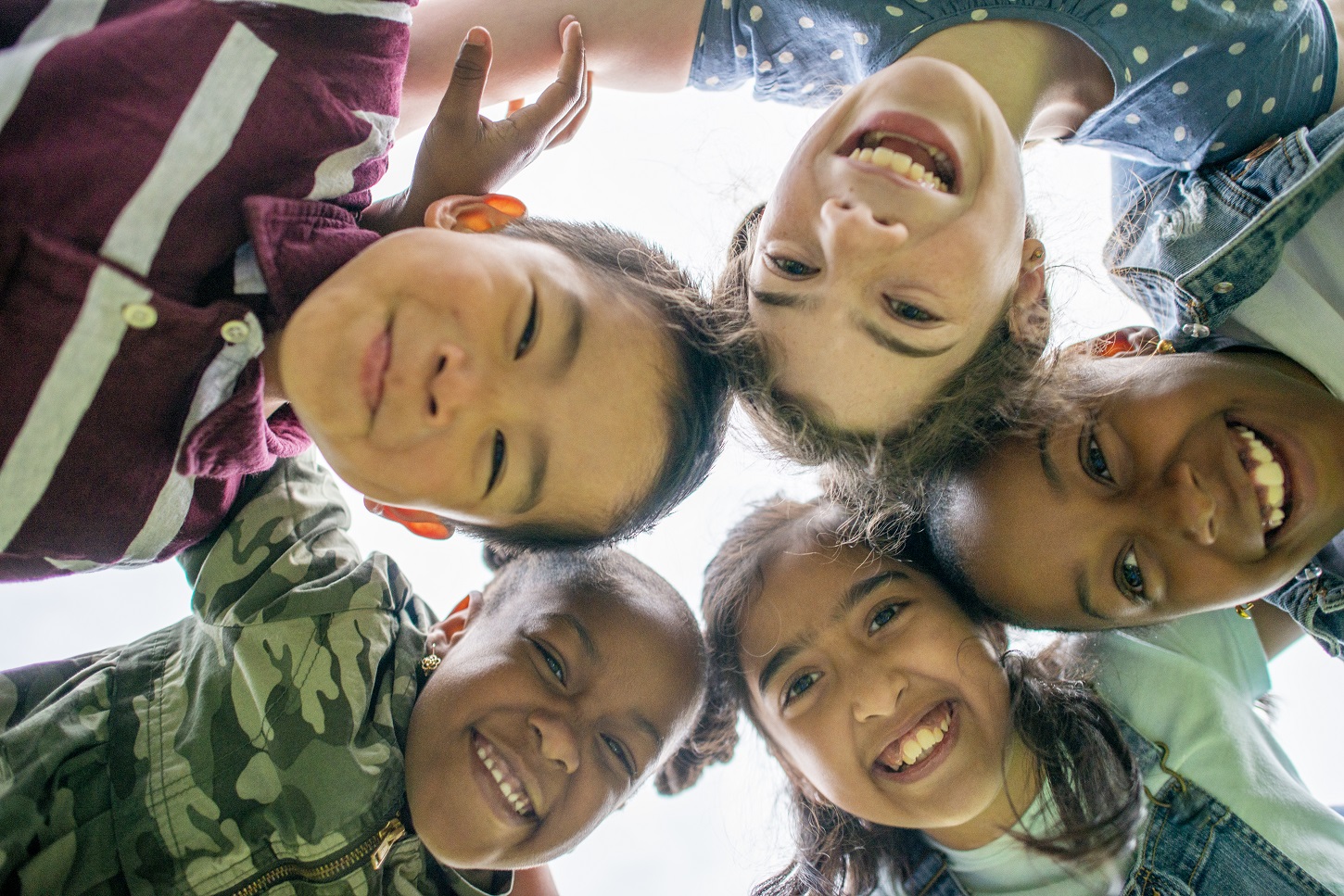If you are in distress, you can call or text 988 at any time. If it is an emergency, call 9-1-1 or go to your local emergency department.
- Public Resources, Reports
Performance Measurement in Infant and Early Childhood Mental Health and Well-Being in Canada Key Messages and Resources from a Rapid Scoping Review
In the fall of 2020, the Mental Health Commission of Canada (MHCC) conducted a rapid scoping review (as part of its early childhood mental health project) to examine population-level performance measurement on mental health and well-being for the infancy and early childhood (IEC) period in selected high-income countries and Canadian jurisdictions. A key project aim was to describe the state of policy and practice around performance measurement and to identify opportunities for pan-Canadian population-level performance measurement for this group. Information was synthesized systematically from scientific and grey literatures with a focus on the past five years. The project was designed to build on the broader work reported in Measuring Progress: Resources for Developing a Mental Health and Addiction Performance Measurement Framework for Canada, which the MHCC published in 2018. In addition to some special considerations, brought about by the COVID-19 pandemic on the measurement of mental health and well-being in this age group, the following broad messages emerged from the materials reviewed. Key messages 1. The knowledge base about the associations between mental health-related states, behaviours, and adversity in the IEC period, on the one hand, and poor outcomes at subsequent life stages, on the other, is solid and is informing the design and refinement of interventions. 2. Effective interventions for the prevention, early intervention, and treatment in the IEC age group are available, and related knowledge about implementation is also accumulating daily. However, myths to the contrary persist on both counts, and policy and practice implementation is falling far behind the science. 3. Population-level performance measurement in child and youth health, and well-being more broadly, has a long history in many countries. The number of indicators used (and proposed) for child and youth health and well-being is very large, and “indicator chaos”2 is evident. 4. Despite the large number of indicators, even for IEC, serious gaps in indicator sets are being reported in most jurisdictions, which effectively makes mental health and well-being-related issues for this age group invisible. Arguably, the most glaring gap is the lack of measures for the early IEC-parent relationship despite the strength of science on this aspect of IEC mental health and well-being. 5. Serious gaps in IEC measurement are present for important subgroups of infants and children as well as for the quality of interventions and their outcomes. 6. Emerging issues (including the COVID-19 pandemic) were noted that will need to be considered and planned for in any pan-Canadian performance measurement initiative for the IEC group or for child and youth mental health and well-being more generally. 7. The scarcity of mental health- and well-being-related indicators for the IEC age group is not due to a lack of possible measures on the concepts of interest or a deficiency of knowledge about how to collect the data. 8. Provincial and territorial mental health policy documents recognize the importance of mental health, both for the IEC age group and performance measurement more broadly. Yet only a minority of jurisdictions have current and specific child and youth mental health policies (that include Indigenous perspectives), which are necessary for advancing a population health approach to performance measurement. This lack of visibility on measurement for the IEC age group can make it a low priority for resource allocation decisions. 9. In Canada, there is an outstanding knowledge capacity for monitoring and measuring child and youth mental health and well-being. We have several centres of excellence and world-leading research teams working on child and youth mental health and well-being, as well as on IEC mental health and well-being and measurement. 10. Recently, several data-related advances and comprehensive initiatives in child health and wellbeing in Canada have provided important capacities, potentials, and opportunities for the progression of performance measurement in child and youth mental health and well-being (including the IEC group). Other than a few pockets of collaboration, these efforts are fragmented. 11. For nearly two decades, multiple research and practice leaders from human service sectors in Canada have stressed the importance, value, and need to have better performance measurement in child and youth mental health (including in the early years). Further, it is well understood that IEC mental health and well-being is critically contingent on the parent-child relationship; consequently, performance measurement should be as well. 12. Having a comprehensive performance measurement framework for child and youth mental health and well-being in Canada is overdue. Such a framework would need to leverage research, practice excellence, and advocacy networks and be developed in partnership with people with lived and living experience (including children, youth, and parents), policy makers (including provinces and territories), and Indigenous peoples. 13. The full potential of a pan-Canadian child and youth mental health and well-being performance measurement framework can only be achieved if an infrastructure and capacity for connecting existing stakeholders (including children, youth, and parents) and initiatives across the country is established for conceptualizing, sourcing, collating, analyzing, and reporting. As a set of “big picture” findings, this rapid scoping review found an impressive knowledge capacity for performance measurement in child and youth mental health and well-being (including for the IEC age group). Also evident was a consensus among stakeholders that there are distinct gaps and we must do better for children and youth in Canada, especially for vulnerable and equity-deserving groups. There is an enormous potential to be among the most advanced countries in the world in this area if we broaden collaborative efforts across organizations, provinces, territories, and communities and maximize our deep subject matter expertise in mental health and well-being measurement. Recommended are:Summary and opportunities for the future
- Public Resources, Reports
Performance Measurement in Infant and Early Childhood Mental Health and Well-Being in Canada Key Messages and Resources from a Rapid Scoping Review
Performance Measurement in Infant and Early Childhood Mental Health and Well-Being in Canada Key Messages and Resources from a Rapid Scoping Review
- Children and Youth, Inspire
In the fall of 2020, the Mental Health Commission of Canada (MHCC) conducted a rapid scoping review (as part of its early childhood mental health project) to examine population-level performance measurement on mental health and well-being for the infancy and early childhood (IEC) period in selected high-income countries and Canadian jurisdictions. A key project aim was to describe the state of policy and practice around performance measurement and to identify opportunities for pan-Canadian population-level performance measurement for this group. Information was synthesized systematically from scientific and grey literatures with a focus on the past five years. The project was designed to build on the broader work reported in Measuring Progress: Resources for Developing a Mental Health and Addiction Performance Measurement Framework for Canada, which the MHCC published in 2018. In addition to some special considerations, brought about by the COVID-19 pandemic on the measurement of mental health and well-being in this age group, the following broad messages emerged from the materials reviewed. Key messages 1. The knowledge base about the associations between mental health-related states, behaviours, and adversity in the IEC period, on the one hand, and poor outcomes at subsequent life stages, on the other, is solid and is informing the design and refinement of interventions. 2. Effective interventions for the prevention, early intervention, and treatment in the IEC age group are available, and related knowledge about implementation is also accumulating daily. However, myths to the contrary persist on both counts, and policy and practice implementation is falling far behind the science. 3. Population-level performance measurement in child and youth health, and well-being more broadly, has a long history in many countries. The number of indicators used (and proposed) for child and youth health and well-being is very large, and “indicator chaos”2 is evident. 4. Despite the large number of indicators, even for IEC, serious gaps in indicator sets are being reported in most jurisdictions, which effectively makes mental health and well-being-related issues for this age group invisible. Arguably, the most glaring gap is the lack of measures for the early IEC-parent relationship despite the strength of science on this aspect of IEC mental health and well-being. 5. Serious gaps in IEC measurement are present for important subgroups of infants and children as well as for the quality of interventions and their outcomes. 6. Emerging issues (including the COVID-19 pandemic) were noted that will need to be considered and planned for in any pan-Canadian performance measurement initiative for the IEC group or for child and youth mental health and well-being more generally. 7. The scarcity of mental health- and well-being-related indicators for the IEC age group is not due to a lack of possible measures on the concepts of interest or a deficiency of knowledge about how to collect the data. 8. Provincial and territorial mental health policy documents recognize the importance of mental health, both for the IEC age group and performance measurement more broadly. Yet only a minority of jurisdictions have current and specific child and youth mental health policies (that include Indigenous perspectives), which are necessary for advancing a population health approach to performance measurement. This lack of visibility on measurement for the IEC age group can make it a low priority for resource allocation decisions. 9. In Canada, there is an outstanding knowledge capacity for monitoring and measuring child and youth mental health and well-being. We have several centres of excellence and world-leading research teams working on child and youth mental health and well-being, as well as on IEC mental health and well-being and measurement. 10. Recently, several data-related advances and comprehensive initiatives in child health and wellbeing in Canada have provided important capacities, potentials, and opportunities for the progression of performance measurement in child and youth mental health and well-being (including the IEC group). Other than a few pockets of collaboration, these efforts are fragmented. 11. For nearly two decades, multiple research and practice leaders from human service sectors in Canada have stressed the importance, value, and need to have better performance measurement in child and youth mental health (including in the early years). Further, it is well understood that IEC mental health and well-being is critically contingent on the parent-child relationship; consequently, performance measurement should be as well. 12. Having a comprehensive performance measurement framework for child and youth mental health and well-being in Canada is overdue. Such a framework would need to leverage research, practice excellence, and advocacy networks and be developed in partnership with people with lived and living experience (including children, youth, and parents), policy makers (including provinces and territories), and Indigenous peoples. 13. The full potential of a pan-Canadian child and youth mental health and well-being performance measurement framework can only be achieved if an infrastructure and capacity for connecting existing stakeholders (including children, youth, and parents) and initiatives across the country is established for conceptualizing, sourcing, collating, analyzing, and reporting. As a set of “big picture” findings, this rapid scoping review found an impressive knowledge capacity for performance measurement in child and youth mental health and well-being (including for the IEC age group). Also evident was a consensus among stakeholders that there are distinct gaps and we must do better for children and youth in Canada, especially for vulnerable and equity-deserving groups. There is an enormous potential to be among the most advanced countries in the world in this area if we broaden collaborative efforts across organizations, provinces, territories, and communities and maximize our deep subject matter expertise in mental health and well-being measurement. Recommended are:
Summary and opportunities for the future
SHARE THIS PAGE
RELATED

Review our Assessment Framework for Mental Health Apps — a national framework containing key standards for safe, quality, and effective mental health apps in Canada.

To help expand the use of e-mental health services, we developed four online learning modules based on our Toolkit for E-Mental Health Implementation, in collaboration with the Centre for Addiction and Mental Health (CAMH).

Stepped Care 2.0© (SC2.0) is a transformative model for organizing and delivering evidence-informed mental health and substance use services.

